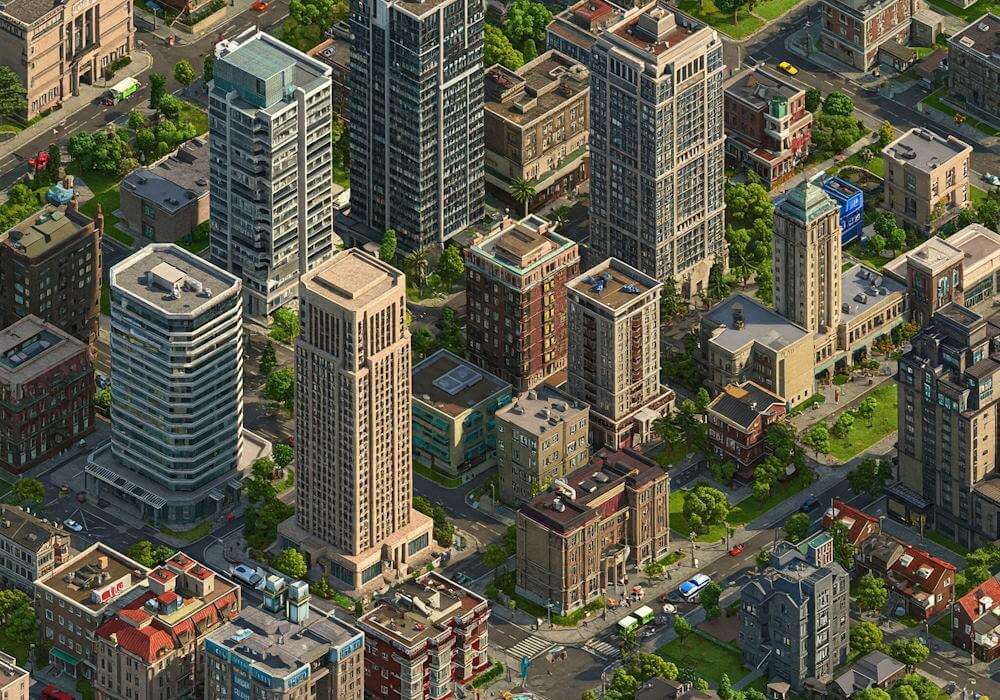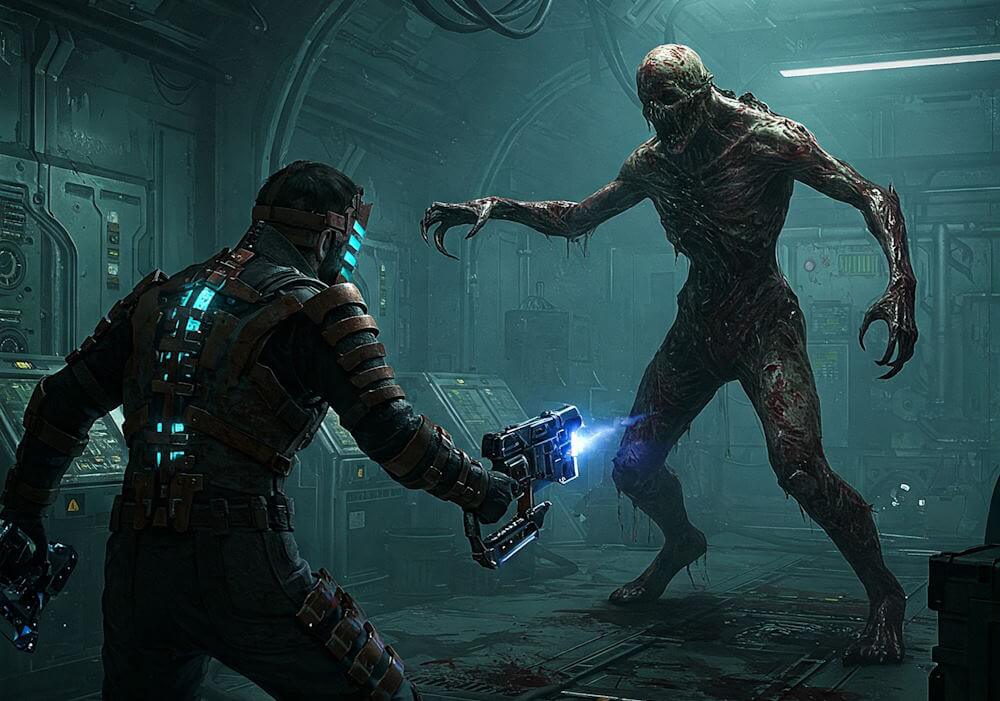Cities: Skylines II marks the highly anticipated sequel to the original title that captured the hearts of simulation game enthusiasts. Released on [insert release date], this new installment builds upon the foundational elements that propelled its predecessor to success. With enhanced gameplay mechanics, visuals, and features, Cities: Skylines II positions itself as a modern paradigm for city-building simulations.
Fans of the original game can expect several noteworthy improvements that will elevate their gaming experience. Developers have focused on integrating advanced simulation layers, allowing for more intricate and realistic city management challenges. One of the standout features that has garnered attention is the improved traffic management system. Players can now tackle the complexities of urban transportation with greater efficiency, directly influencing the flow of city life.
Furthermore, Cities: Skylines II introduces a plethora of new building options and customization capabilities, enabling players to create and shape their cities with unprecedented detail. These options extend to residential, commercial, and industrial zoning, providing layers of depth that cater to both casual players and hardcore simulation fans alike. The introduction of dynamic weather systems will also enhance the immersive nature of the game, as players must adapt their strategies based on changing environmental conditions.
The anticipation surrounding this sequel is palpable, as the community looks forward to exploring the vast potential of Cities: Skylines II. The promise of greater realism, richer storytelling, and broader creativity in city design has set a high bar for expectations. In the following sections, we will delve deeper into the specific improvements and comparing elements that distinguish Cities: Skylines II from its original counterpart.
Enhanced Graphics and Visuals
Cities: Skylines II has made remarkable strides in graphics and visual fidelity, setting a new benchmark for city-building simulations. One of the most noteworthy improvements lies in the updated character models. These new avatars exhibit a greater range of motion and more realistic animations, making them feel more alive and integral to the urban landscape. The designers have incorporated advanced facial expressions and nuanced body language, which enhances the overall immersion of the game.
In addition to dynamic character models, Cities: Skylines II features significant advancements in environmental effects. The game incorporates real-time weather changes, day-night cycles, and varied lighting conditions that not only beautify the skyline but also impact gameplay. For instance, during rainstorms, players will notice reflections on wet streets, while sunsets cast warm glows on buildings, creating a picturesque ambiance that is more than just visually appealing; it enriches the experience of urban planning and management.
The level of detail in urban settings is another area where Cities: Skylines II excels compared to its predecessor. Cities are more densely populated with intricately designed buildings, each with unique architectural styles that reflect the culture and environment within the game. The improved graphics allow for a higher polygon count, leading to sharper textures and more intricate details on every structure, whether residential, commercial, or industrial. Furthermore, the enhanced landscaping tools enable users to create lush parks and realistic terrains that blend seamlessly with the urban sprawl.
Overall, the enhanced graphics and visuals of Cities: Skylines II provide an unparalleled gaming experience. The careful attention to detail in character animations, environmental dynamics, and urban landscapes collectively elevate the simulation, making it a standout evolution from its original version.
Advanced Simulation Mechanics
Cities: Skylines II introduces several advanced simulation mechanics that significantly enhance the urban planning experience. One of the most notable improvements is the refined traffic system. Unlike its predecessor, this iteration boasts a more detailed approach to transportation. The traffic simulation now takes into account various factors such as road types, intersections, and vehicle behavior, leading to more realistic congestion patterns. Players must carefully consider their city’s layout, as the interplay between different infrastructures can either alleviate or exacerbate traffic issues. The dynamic nature of this system encourages users to continuously assess and adapt their design strategies.
Another key feature is the enhanced artificial intelligence (AI) governing citizen behavior. In Cities: Skylines II, each resident possesses unique needs and preferences, influencing their movement patterns and interaction with urban services. This depth creates a more immersive experience, as players must understand and react to the demands of their populace. The citizens are now more responsive to changes in city management, such as public transport availability, economic conditions, and environmental factors. This increased level of engagement encourages players to address social issues comprehensively, thereby fostering a sense of community in their virtual cities.
Moreover, the resource management capabilities have also received a notable upgrade. Players can now manage various resources more intricately, ranging from water and energy supply to waste disposal. The introduction of renewable energy options adds an additional layer of complexity to city planning. It enables players to strategize their resource allocation based on future growth forecasts and sustainability goals. These changes not only make for a more challenging gameplay experience but also ensure that decisions have tangible impacts on the overall health of the city.
Expanded Building and Customization Options
Cities: Skylines II introduces an impressive array of building and customization options that significantly enhance the player experience compared to its predecessor. This installment not only expands the selection of structures available but also diversifies the types of zoning and their respective functionalities. For players invested in the artistry of urban design, the innovative tools at their disposal allow for a level of creativity previously unattainable in city-building simulations.
One of the standout features of Cities: Skylines II is the introduction of various architectural styles that cater to different cultural aesthetics. Players can construct residential areas featuring modern skyscrapers alongside quaint historical buildings, creating a vivid contrast and enriching the visual appeal of their cities. Additionally, these building designs come with customizable options, enabling players to tweak dimensions, colors, and materials. This flexibility not only enhances the realism but also allows for a truly personalized city layout, fostering unique environments tailored to individual player preferences.
In terms of zoning, Cities: Skylines II provides a more nuanced system for land use, incorporating advanced zoning types such as mixed-use developments and unique industrial sectors. These enhancements facilitate more intricate planning strategies and encourage players to think critically about the relationships between different areas of their cities. This level of customization impacts not only the city’s aesthetic but also its functionality. Players have the capability to design neighborhoods that can grow organically, respond to citizens’ needs, and adapt to evolving urban challenges.
Ultimately, the expanded building and customization options in Cities: Skylines II empower players to create intricate cities that reflect their vision. This rich variety in construction not only improves gameplay but also fosters a deeper connection between the player and the ever-evolving cityscape they cultivate.
Improved User Interface and Accessibility
The redesigned user interface in Cities: Skylines II marks a significant enhancement over its predecessor, offering an experience tailored to both newcomers and seasoned players. The interface features streamlined menus that allow for easier navigation, enabling users to manage their cities with greater efficiency. By consolidating various tools and options into a more cohesive layout, players can access critical functions without overwhelming clutter, facilitating a smoother gaming experience.
One of the notable advancements in Cities: Skylines II is its commitment to accessibility. The game includes features aimed at accommodating players with varying abilities, ensuring that everyone can participate in and enjoy city-building. Customization options, such as adjustable text sizes, colorblind modes, and simplified controls, empower users to tailor the interface to their specific needs, fostering an inclusive environment for all. Accessibility options are not merely add-ons; they represent a core aspect of the design philosophy in Cities: Skylines II, allowing a wider audience to engage with the complexity of city management.
Moreover, the intuitive controls enhance the overall user experience. The graphical fidelity of the interface ensures that important information is clearly presented, making it easier for players to gather insights into their cities. Whether assessing traffic patterns, public services, or citizen happiness, the organized layout facilitates quick decision-making. This improvement is particularly advantageous for veterans who seek to operate at an advanced level of efficiency and effectiveness.
In summary, the improved user interface and accessibility features in Cities: Skylines II not only provide a more enjoyable gaming experience but also invite more players to engage with the complexities of city-building. By prioritizing user-friendliness alongside comprehensive design, the game sets a new standard for urban simulation titles.
Multiplayer and Community Engagement
Cities: Skylines II introduces a significant enhancement in the realm of multiplayer capabilities, allowing players to engage in collaborative city-building experiences that were limited in the original title. This feature adds a new dimension, encouraging cooperation among players as they embark on the ambitious task of creating a thriving metropolis. The multiplayer mode is designed to support various play styles, permitting users to share resources, manage infrastructure projects jointly, and even tackle unique challenges together. This collective engagement fosters a sense of community that resonates well with the player base.
In addition to multiplayer functionalities, Cities: Skylines II amplifies community engagement through robust modding support and seamless integration with online platforms. Customization remains at the heart of the game, empowering players to tweak every aspect of their cities to suit their personal preferences. The modding tools are user-friendly, enabling both newcomers and seasoned veterans to contribute content that enriches the gameplay experience. This vibrant modding community not only allows individuals to create innovative features and assets but also enhances the longevity of the game as users continue to share their creations.
Furthermore, the integration of online platforms facilitates the sharing of progress, strategies, and ideas, fostering an environment of collaboration and creativity. Players can showcase their cities through social media, offering inspiration to others and encouraging feedback that could lead to improvements. Through community events or challenges, Cities: Skylines II sets the stage for players to come together, showcasing the power of collective creativity in shaping urban landscapes.
By prioritizing multiplayer features and bolstering community interaction, Cities: Skylines II truly builds upon the foundation of its predecessor, positioning itself as a leader in the city-building genre. This evolution invites players to engage not just as solitary city planners, but as part of an expansive, interactive community.
Environmental Factors and Sustainability
In the urban planning simulation of Cities: Skylines II, environmental factors and sustainability play a pivotal role, presenting players with the challenge of crafting cities that not only thrive economically but also respect ecological limits. One of the most notable advancements in this sequel is its emphasis on creating a balance between urban development and nature, reflecting the pressing global concerns regarding climate change and resource depletion.
The game’s mechanics incorporate a variety of environmental challenges that players must navigate. For instance, pollution management is a central gameplay element where players must monitor air, water, and land pollution levels, implementing effective strategies to mitigate their negative impacts. This aspect encourages players to explore solutions such as zoning districts with strict environmental guidelines and adopting cleaner industrial practices. The ability to see the immediate effects of these decisions on community health and satisfaction adds depth to the gameplay experience.
Additionally, Cities: Skylines II introduces advanced renewable resource management options, enabling players to harness solar, wind, and hydroelectric power. By strategically integrating these sustainable energy sources into their cities, players can significantly reduce their carbon footprint, contributing to a healthier environment. This feature not only promotes eco-friendly urban management but also challenges players to think critically about energy consumption and urban growth.
Furthermore, the game encourages a circular economy model, where waste management and recycling initiatives are essential components in maintaining ecological balance. Players are prompted to create efficient waste disposal systems, encouraging recycling practices that reduce landfill use and lower pollution levels. This holistic approach to city-building stresses the importance of sustainability, making it a defining feature of Cities: Skylines II.
Performance Optimizations and Technical Advancements
In the realm of city-building simulations, technical performance plays a crucial role in shaping user experience. The release of Cities: Skylines II marks a significant departure from its predecessor, primarily attributed to meticulous enhancements in performance optimizations and technical advancements. These improvements not only streamline gameplay but also create a more immersive environment for players to build and expand their urban landscapes.
One of the most notable advancements in Cities: Skylines II is the optimization for a variety of hardware configurations. This allows the game to run smoothly on a wider range of systems, catering to both high-end and mid-range users. This inclusive approach ensures that more players can engage with the game, regardless of their computing capabilities. The developers have implemented advanced algorithms and coding practices to enhance load times, which significantly reduces the waits encountered in the original version. By optimizing the game’s memory usage and resource allocation, players can expect faster transitions between various city districts and menus.
Moreover, Cities: Skylines II introduces enhanced graphical fidelity and detail, showcasing larger cities without compromising performance. The new rendering techniques and physics calculations allow for more intricate city designs, including improved traffic simulations and sky-high structures. The enhanced simulation engine manages large numbers of citizens and vehicles more efficiently, thus enabling players to expand their cities further than ever before. As a result, players can witness rich, dynamic interactions that reflect the complexities of urban living.
Ultimately, the significant performance optimizations and technical advancements in Cities: Skylines II present a compelling case for its superiority over the original. As city builders embrace these enhancements, they will find themselves fully immersed in a world that both challenges and captivates at unprecedented levels. The evolution of technology in this sequel has indeed set a new benchmark for future simulations in the genre.
Conclusion: Why Cities: Skylines II is a Must-Play
As we have explored throughout this discussion, Cities: Skylines II presents a remarkable advancement over its predecessor, establishing itself as a must-play for both veterans and newcomers to the city-building genre. With its enhanced graphics, more complex infrastructure management, and significantly improved simulation mechanics, this sequel offers players an enriched environment to unleash their creativity. The realistic visual fidelity draws players deeper into the immersive experience, making city planning not just engaging, but truly captivating.
Additionally, the game introduces an array of new features such as dynamic seasons that affect gameplay, offering challenges and opportunities that keep the experience fresh. The addition of improved AI for citizens allows for a more responsive and realistic interaction with the urban landscape, allowing players to feel a genuine connection with their creations. This level of detail provides players with a deeper understanding of urban planning and its intricacies, paving the way for innovative strategies.
The modding community is also a significant aspect worth mentioning. The game encourages community involvement, enabling players to create and share their own content. This aspect not only increases the longevity of the game but also fosters a collaborative spirit that enhances the overall experience. Cities: Skylines II is not merely an update; it is a transformative leap forward that offers a profound exploration of city management.
In conclusion, Cities: Skylines II stands as an essential entry for anyone interested in city-building simulations. With its refined mechanics, breathtaking visuals, and a wealth of new features, it is bound to captivate the hearts and minds of players, inviting them to create, innovate, and share their urban dreams. Therefore, it is highly encouraged to embrace this new gaming experience, and to share your thoughts and experiences as you build your own virtual metropolis.




